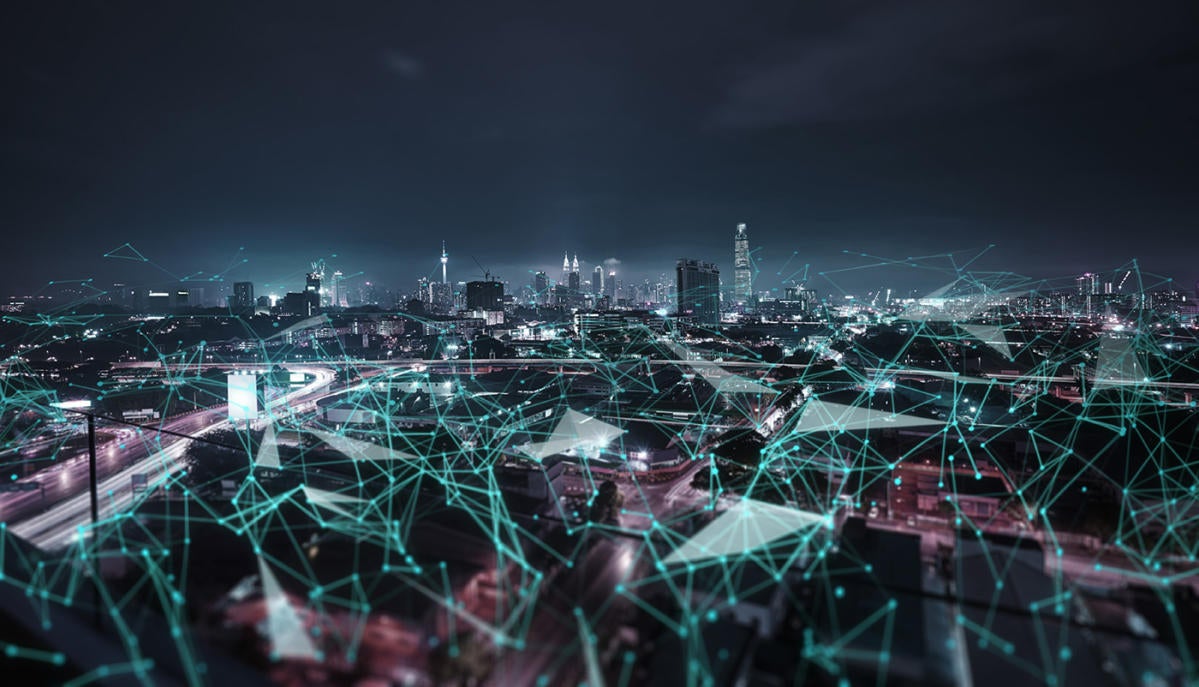Get ready for the metaverse

“The metaverse presents an opportunity to more fully transcend our physical
limitations,” says Anand Srivatsa, CEO of Tobii. “Technologies like eye
tracking will play a critical role in helping reduce the need for compute and
networking power, which are required to deliver lifelike, immersive virtual
environments. Eye tracking will also help users express their attention and
intent in more realistic ways when they’re in the digital universe.” ... If
human-digital devices enable the experience, and infrastructure supports
metaverse-scale interactivity, then it’s how real the experience feels to
users that will be the primary innovation and differentiator. To start,
organizations will need strong dataops capabilities, and machine learning
models will likely require synthetic data generation. Zuk continues,
“Businesses looking to make waves in the metaverse usually begin by
establishing a robust data pipeline—with synthetic data as the primary
resource driving the development life cycle.” Bart Schouw, chief evangelist at
Software AG, agrees.
Cybercriminals are having it easy with phishing-as-a-service
Phishing-as-a-service is a fairly new phenomenon, this trend is where the
cybercriminal actually takes the role of a service provider, carrying out
attacks for others instead of just for themselves in exchange for a sum of
money. PaaS only serves to show how hackers are becoming better organized and
looking for greater monetisation from ransomware. Instead of threat actors
being required to have technical knowledge of building or taking over
infrastructure to host a phishing kit (login page emulating known login
interfaces like Facebook/Amazon/Netflix/OWA), the barrier to entry is
significantly lowered with the introduction of PaaS. ... Phishing-as-a-service
can be very advanced, with capabilities spanning from detecting sandbox
environments, to fingerprinting user agents in order to determine whether you
might be a researchers bot. That being said, Web Content Filters can often
limit the exposure of users.
Top 5 Data Science Trends That Will Dominate 2023
Automation plays a significant role in transforming the world. It has
stimulated various transformations in business, resulting in sustained
proficiency. In the past few years, the best automation capabilities have been
provided by the industrialisation of big data analytics. The process of
Analytic Process Automation (APA) encourages growth by providing prescriptive
and predictive abilities along with other insights to businesses. Through
this, businesses have been able to receive excellence with efficient results
and low costs. Analytic Process Automation mainly enhances computing power to
make good right decisions. Data analytics automation can be considered a
perfect disruptive force. Big data analysis helps substantially with
stimulating valuable data usage and productivity. ... Data Governance handles
data access all over the world. General Data Protection Regulation (GDPR)
compliance has various organizations and businesses that prioritize data
governance and handles the data of consumers.
Code Red: the Business Impact of Code Quality
The main problem with technical debt is that code lacks visibility. Code is an
abstract concept that isn’t accessible to all members of your organization.
Hence, it’s easy to ignore technical debt even if we are aware of the general
problem. Quantifying and visualizing the situation in your codebase is key,
both for the engineering teams as well as for product and management.
Visualisations are wonderful as they let us tap into the most powerful pattern
detector that we have in the known universe: the human brain. I explored the
concept at depth in Your Code as a Crime Scene, and founded CodeScene back in
2015 to make the techniques available to a general audience. ... With code
health and hotspots covered, we have everything we need for taking it full
circle. Without a quantifiable business impact, it’s hard to make the case for
investing in technical debt paydowns. Any measures we use risk being dismissed
as vanity metrics while the code continues to deteriorate. We don’t want that
to happen.

Those at the cutting edge of ML are increasingly turning to synthetic data to
circumvent the numerous constraints of original or real-world data. For
instance, company Synthesis AI offers a cloud-based generation platform that
delivers millions of perfectly labeled and diverse images of artificial
people. Synthesis AI has been able to accomplish many challenges that come
with the messy reality of original data. For a start, the company makes the
data cheaper. ... The challenges of real-world data don’t end there. In some
fields, huge historical bias pollutes data sets. This is how we end up with
global tech behemoths running into hot water because their algorithms don’t
recognize black faces properly. Even now, with ML technology experts acutely
aware of the bias issue, it can be challenging to collate a real-world dataset
entirely free of bias. Even if a real-world dataset can account for all of the
above challenges, which in reality is hard to imagine, data models need to be
improved and tweaked constantly to stay unbiased and avoid degradation over
time. That means a constant need for fresh data.
Improve Developer Experience to Prevent Burnout

It’s obvious that a poor developer experience creates a negative impact
throughout an entire company. If developers aren’t producing good work due to
unhappiness, illness or burnout, it’s likely that organizations aren’t staying
at the cutting edge or offering competitive products in the market. A
demoralized team can have a really negative business impact, and it can even
change the way that people outside the company feel about it. An unhappy team
isn’t going to lead to much creativity or productivity. As a way to combat
this growing trend, companies are looking left and right for solutions. Some
companies are reaching for things like extra PTO days, a full month off,
better benefits, pay raises, and more fun work culture or relaxed dress codes.
Those things are nice to have, and we’re certainly not speaking ill of any
organization trying something new to help their employees. But at the end of
the day, if the overwork and unrealistic expectations remain, the developer
burnout will remain too.
Top skill-building resources and advice for CISOs

Ultimately, the hiring organisations will define what it needs in terms of
cybersecurity to find the right person. In finance and insurance, for example,
there will be specific rules that must be followed in different countries and
cybersecurity leaders in such organisations may even be liable. In
telecommunications, the skills required are likely to be more technical,
whereas in government knowledge around governance and risk are top of the
list. “For instance, a smaller organisation which is a greenfield site, or a
large multinational where there is already an established security function
require different sets of skills and approaches,” Joseph Head, director
technical security at Intaso tells CSO. “There are a few commonalities between
all CISO roles, however: an understanding of risk and risk appetite — in other
words, an understanding of the business, and how much risk it can carry. This
dictates how much work a CISO must do, and therefore available budget.
Unlocking that budget can only be done by communicating effectively.”
Startup promises SD-WAN service with MPLS reliability, less complexity

Graphiant says that what makes its service different from SD-WAN offerings is
how its Stateless Graphiant Core handles WAN data and control planes. The
company says many large enterprises have been unwilling to give up the SLAs
that come with MPLS for mission-critical traffic. Thus, SD-WAN augments the
MPLS network for lower-priority traffic, and the network team must manage two
different networks. The operational and administrative overhead of the
combined solution, along with the complexity of overlays, tunnels, and policy
management means that many enterprises are turning back to MPLS providers that
offer their own SD-WAN or that resell others’. That way, the enterprises can
order to relieve the burden of managing a complicated managed service
themselves. “Enterprise networks have transitioned from predictable topologies
to unpredictable ones,” Raza says. He argues that cloud services, IoT, work
from home, and a range of other pressures have pushed the MPLS-plus-SD-WAN
formula to its breaking point.
High-trust workplace meets no-trust network security

Clearly, the traditional model for IT security is no longer fit for this
newly-dispersed world of work and a fresh model is needed — one where the unit
of control is identity and where identity is the basis of a system of
authorisation and authentication for every device, service and user on your
network. Welcome to zero trust, a system which works on the assumption that
identity needs to be authenticated and authorised. Given the shift to
high-trust digital working environments and the surge in attacks, interest in
zero trust is growing. According to Gartner, 40 percent of remote access will
be conducted using a zero trust model by 2024 — up from five percent in 2020.
Remote work is driving uptake, with zero trust seen as a fast way to achieve
security and compliance, according to a Microsoft report on its adoption. Zero
trust is implemented through consistent tools, workflows and processes
delivered as a set of shared, centrally-managed and automated services. What
does this look like? It means codifying policies and procedures for
authorisation and access across the technology stacks, domains and service
providers that comprise the IT infrastructure.
IT leadership: How to defeat burnout

What sets Liberty Mutual apart from other organizations is our purpose. We
exist to help people embrace today and confidently pursue tomorrow. This is
our North Star and helps define and guide everything we do. We also understand
that combating burnout requires connecting work to outcome. To ensure that
this happens, we spend time defining targeted outcomes – the realization of
the expected benefit – versus output – for example, simply turning on a new
feature in a system. Success is measured by producing results and realizing
benefits. Outcome might be the ability to deploy capabilities faster than
before, for example. The key word is ‘capabilities,’ which help us deliver
better products and services to customers. An outcome is much bigger than an
output such as simply turning on a technology. These nuances matter in the
context of burnout. If you’re working on a project and you don’t know why
you’re doing it or what the intended results are, you’re not connected to why
it matters.
Quote for the day:
"Brilliant strategy is the best route
to desirable ends with available means." -- Max McKeown
No comments:
Post a Comment